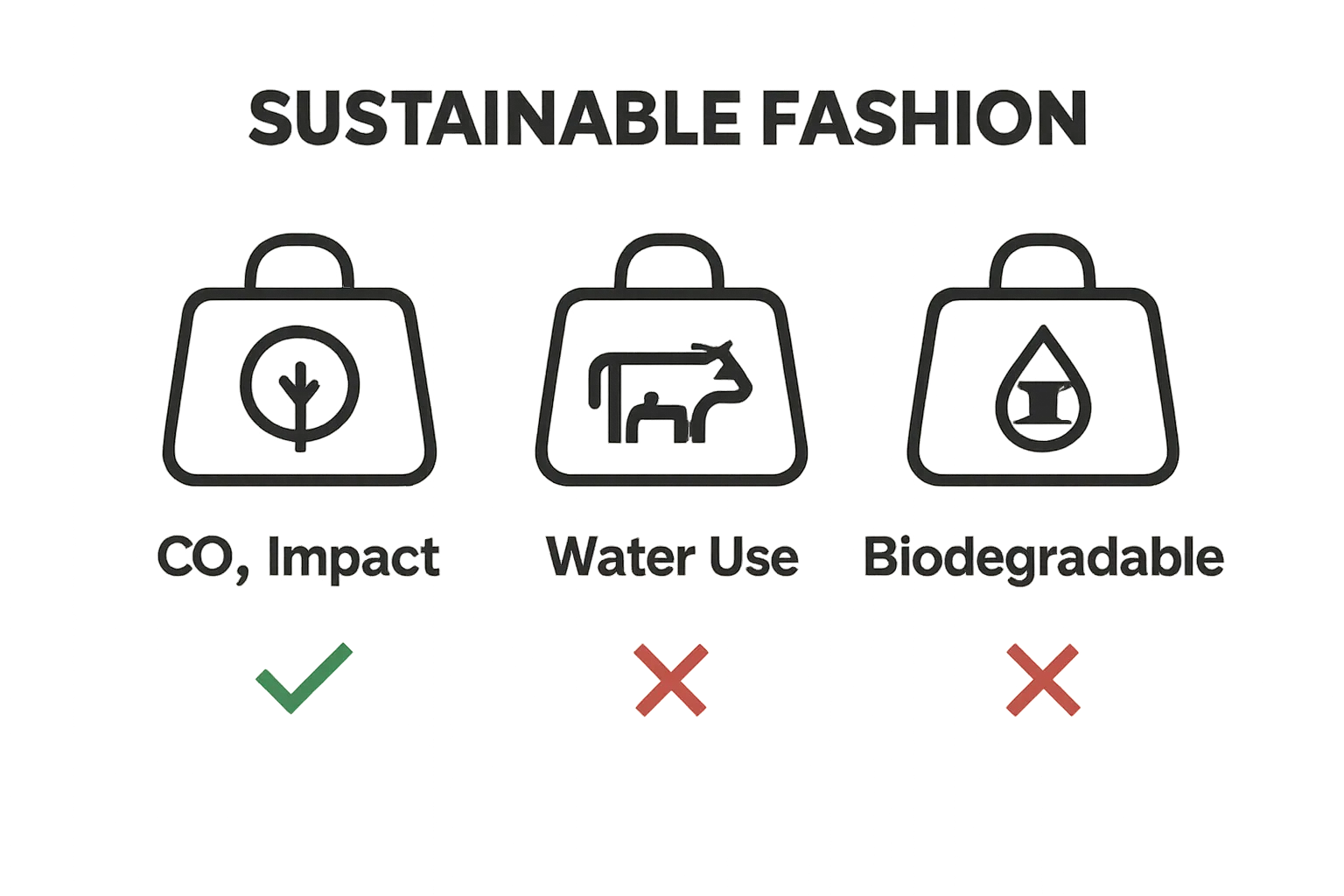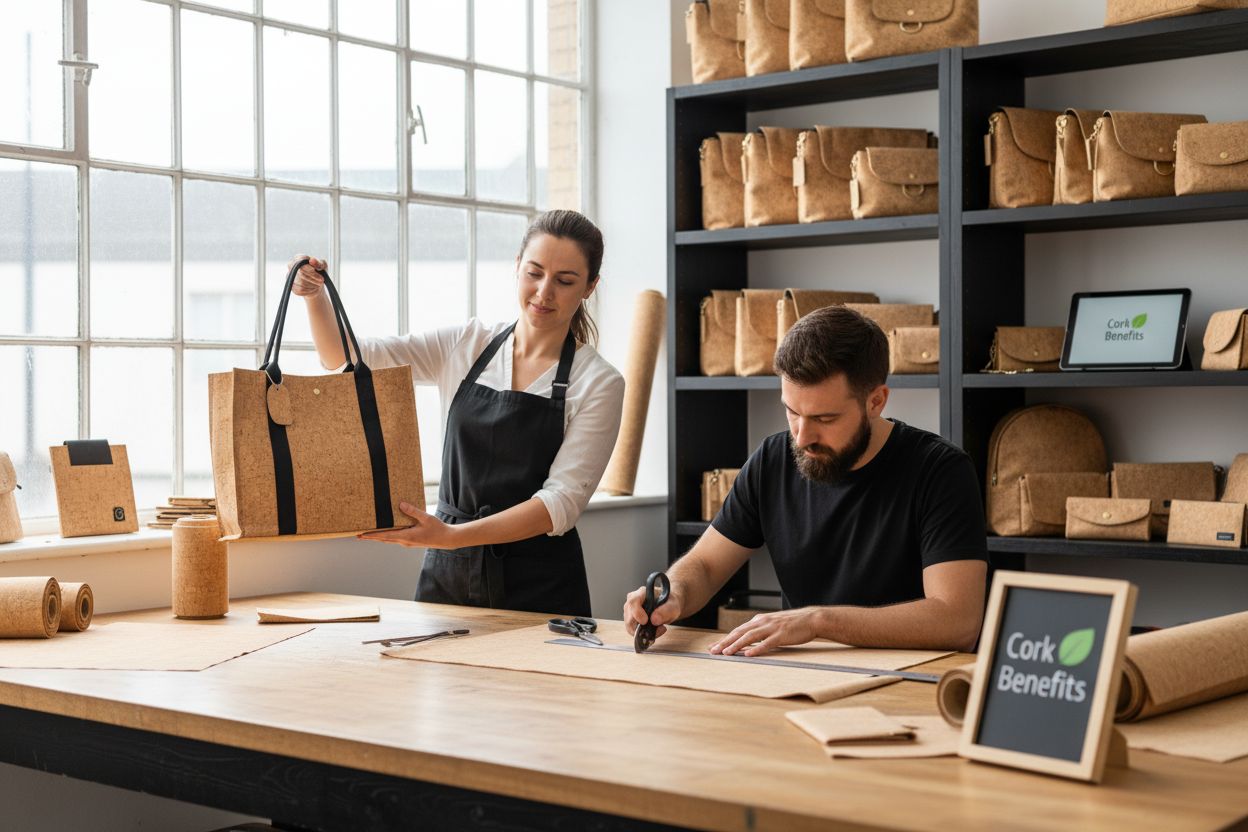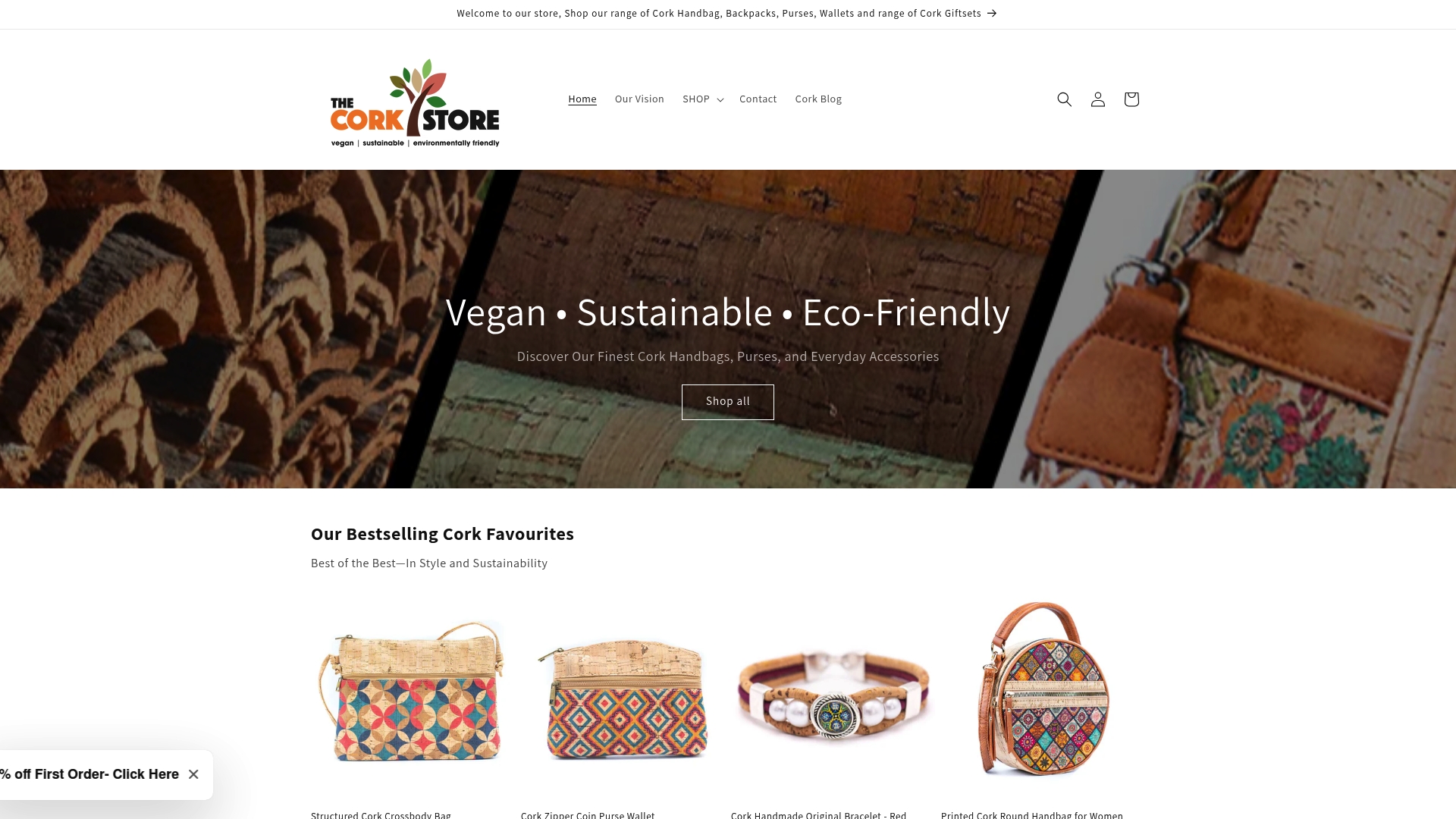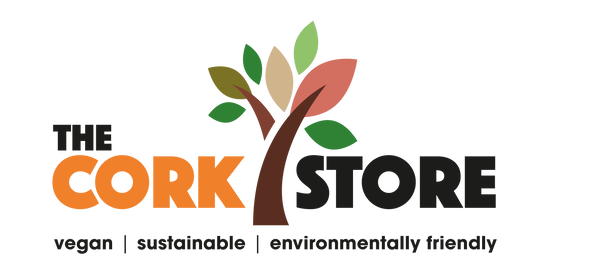
Understanding Why Use Cork Bags for Eco-Friendly Fashion
Share
Cork bags are shaking up the world of sustainable fashion. Picture this: cork oak trees can keep producing bark for over 200 years without being harmed. Most people imagine eco-friendly accessories as a compromise on style or performance, but cork’s unique properties give you lightness, strength, and a touch of luxury all at once.
Table of Contents
- What Are Cork Bags And Their Unique Properties?
- The Environmental Impact Of Choosing Cork Bags
- Cork Bags Vs. Traditional Materials: A Comparison
- How Cork Is Harvested And Processed For Fashion
- The Future Of Sustainable Fashion With Cork Accessories
Quick Summary
| Takeaway | Explanation |
|---|---|
| Cork bags are eco-friendly alternatives | They provide sustainable options compared to traditional leather or synthetic materials, reducing environmental impact. |
| Cork harvesting is sustainable | The bark is removed without harming trees, allowing them to regenerate and absorb carbon for over 200 years. |
| Cork bags are durable and lightweight | The material is strong, water-resistant, and significantly lighter than leather, ideal for everyday use. |
| Cork production minimizes waste | Nearly 100% of harvested bark is used, resulting in low waste and negligible environmental disruption. |
| Choosing cork supports ecological balance | Purchasing cork bags directly contributes to carbon sequestration and supports sustainable forestry practices. |
What are Cork Bags and Their Unique Properties?
Cork bags represent a revolutionary approach to sustainable fashion, offering an innovative alternative to traditional leather and synthetic accessories. These unique bags are crafted from cork fabric, a remarkable material extracted from the bark of cork oak trees, which provides an extraordinary combination of aesthetic appeal and functional advantages.
The Origins of Cork Material
Cork originates from the cork oak tree (Quercus suber), primarily found in Mediterranean regions like Portugal and Spain. The remarkable harvesting process involves carefully removing bark from living trees without causing damage, allowing the tree to continue growing and regenerating. Research from sustainable materials science indicates that cork harvesting is one of the most environmentally friendly material extraction methods, with trees capable of producing bark for over 200 years.
Exceptional Material Characteristics
Cork bags boast an impressive array of properties that set them apart from conventional accessories. These bags are extraordinarily lightweight, water-resistant, and incredibly durable. The material possesses natural characteristics that make it highly practical for everyday use:
- Hypoallergenic and antimicrobial properties
- Excellent resistance to moisture and wear
- Flexible yet strong structural integrity
- Naturally sustainable and biodegradable
Moreover, cork bags offer a unique textural experience. The material feels smooth yet structured, providing a sophisticated tactile quality that distinguishes it from leather or synthetic alternatives. For those interested in understanding more about this innovative material, read more about cork’s role in sustainable fashion.
The manufacturing process transforms cork bark into a thin, flexible fabric through specialized techniques that preserve the material’s inherent qualities. This transformation allows designers to create stylish, functional bags that appeal to environmentally conscious consumers seeking both aesthetics and ethical production methods.
The following table outlines the distinctive features of cork bags as highlighted in the article, providing a concise overview of what sets them apart in the context of sustainable fashion.
| Feature | Description |
|---|---|
| Lightweight | Significantly lighter than leather or canvas alternatives |
| Water Resistance | Naturally repels water, suitable for diverse weather conditions |
| Durability | High resilience, maintains structure over time |
| Hypoallergenic & Antimicrobial | Safe for sensitive skin, resists mould and bacterial growth |
| Sustainability | Harvested from regenerating bark, zero harm to trees |
| Biodegradability | Completely decomposes, reduces landfill waste |
| Unique Texture & Appearance | Smooth yet structured, visually distinctive from traditional leather |
The Environmental Impact of Choosing Cork Bags
Choosing cork bags represents a significant step towards reducing environmental harm and promoting sustainable fashion practices. These remarkable accessories offer far more than aesthetic appeal, delivering substantial ecological benefits that extend well beyond traditional manufacturing approaches.
Carbon Sequestration and Forest Preservation
Research from environmental science demonstrates that cork oak forests are extraordinary carbon sinks, capable of absorbing substantial amounts of atmospheric carbon dioxide. When consumers select cork bags, they directly support an ecosystem that plays a crucial role in mitigating climate change.
The harvesting process is uniquely sustainable, allowing cork oak trees to remain living and continue capturing carbon throughout their extensive lifecycle.
Sustainable Production and Waste Reduction
Cork bag production stands out as an exemplary model of circular economy principles. Unlike synthetic materials that generate significant waste, cork manufacturing utilizes nearly 100% of the harvested bark with minimal environmental disruption. The production process generates:
- Negligible water consumption
- Minimal industrial waste
- Low energy requirements during processing
- Completely biodegradable end products
Moreover, cork bags offer an alternative to leather and petroleum-based synthetic accessories, which often involve environmentally destructive manufacturing processes. For those interested in exploring sustainable fashion choices, learn more about eco-friendly material alternatives.
By selecting cork bags, environmentally conscious consumers make a tangible contribution to reducing global carbon emissions and supporting regenerative agricultural practices. Each purchase represents a vote for sustainable production methods that prioritize ecological balance and long-term environmental health.
To help readers quickly compare the environmental and practical implications of traditional bag materials and cork, the following table summarises key differences and benefits.
| Material | Environmental Impact | Durability & Maintenance | Other Considerations |
|---|---|---|---|
| Cork | Low impact, supports carbon sequestration | Highly durable, water-resistant | Lightweight, biodegradable, vegan |
| Leather | High carbon emissions, resource intensive | Durable but heavy, regular care | Animal-based, non-biodegradable |
| Synthetic (e.g. PVC) | Petroleum-based, microplastic pollution | Varies, prone to cracking/fading | Non-renewable, contributes to landfill |
| Canvas | High water usage in production | Reasonably durable, stains easily | Plant-based, but not always eco-friendly |
Cork Bags vs. Traditional Materials: A Comparison
Navigating the landscape of sustainable fashion requires a critical examination of material choices. Cork bags emerge as a revolutionary alternative to conventional leather, synthetic, and canvas accessories, offering unparalleled advantages that challenge traditional manufacturing paradigms.
Performance and Durability Comparison
Research from material science reveals that cork fabric provides exceptional performance characteristics that rival and often surpass traditional materials. Unlike leather, which requires extensive processing and animal farming, cork bags demonstrate remarkable resilience, water resistance, and lightweight properties. The material maintains structural integrity while being significantly lighter than leather counterparts, making it an ideal choice for everyday accessories.

Environmental and Ethical Considerations
Traditional bag materials present significant environmental challenges:
- Leather production involves substantial carbon emissions
- Synthetic materials generate microplastic pollution
- Canvas manufacturing requires extensive water consumption
- Petroleum-based materials contribute to non-renewable resource depletion
In stark contrast, cork bags offer a comprehensive solution that addresses these critical concerns. Explore our guide on vegan handbag alternatives to understand the broader implications of sustainable material choices.
Moreover, cork bags represent a holistic approach to fashion that prioritizes both ecological sustainability and aesthetic innovation. By choosing cork, consumers actively participate in a production cycle that supports forest preservation, reduces waste, and minimizes environmental degradation associated with traditional material extraction and manufacturing processes.
How Cork is Harvested and Processed for Fashion
The journey of transforming cork oak bark into sophisticated fashion accessories represents a remarkable intersection of ecological preservation and innovative design. Far from being a simple extraction process, cork harvesting embodies a delicate, sustainable approach that respects both natural ecosystems and manufacturing integrity.
The Art of Sustainable Cork Harvesting
Sustainable forest management research reveals that cork harvesting is a meticulously controlled process that ensures tree health and longevity. Skilled professionals carefully remove the outer bark from cork oak trees using specialized hand tools, taking great care not to damage the living tree. This process occurs only once every 9-12 years, allowing the tree to regenerate its protective bark and continue absorbing carbon dioxide throughout its extended lifecycle.
Processing Cork into Fashion Fabric
Once harvested, cork undergoes a sophisticated transformation process that converts raw bark into flexible, durable fabric suitable for fashion accessories. The processing involves several critical stages:
- Carefully seasoning the harvested bark
- Boiling the bark to enhance its flexibility
- Flattening the material into thin, uniform sheets
- Treating the sheets to improve durability and texture
- Cutting and preparing the material for specific fashion applications
Learn more about the innovative world of cork leather and discover how this remarkable material is revolutionizing sustainable fashion. The entire process prioritizes minimal waste, with virtually every component of the harvested bark finding purposeful use in production.
By choosing cork bags, consumers support an extraordinary manufacturing approach that celebrates both environmental stewardship and cutting-edge design innovation. Each accessory represents a testament to the potential of sustainable materials to reshape our understanding of fashion production.

The Future of Sustainable Fashion with Cork Accessories
Sustainable fashion represents more than a passing trend. It signifies a profound transformation in how consumers and designers approach material selection, manufacturing processes, and environmental responsibility. Cork accessories emerge as a pivotal innovation at the forefront of this revolutionary movement, promising a sustainable alternative that challenges traditional fashion paradigms.
Technological Innovations in Cork Manufacturing
Research on sustainable materials development indicates that cork technology is rapidly evolving, enabling more sophisticated and versatile design possibilities. Advanced processing techniques now allow manufacturers to create cork fabrics with enhanced durability, flexibility, and aesthetic appeal. These innovations mean cork accessories are no longer confined to niche markets but are becoming increasingly attractive to mainstream fashion consumers seeking both style and ecological responsibility.
Consumer Driven Sustainability Trends
The future of sustainable fashion is being shaped by increasingly informed and environmentally conscious consumers who demand transparency and ethical production. Cork accessories represent this shift through several key attributes:
- Zero animal product involvement
- Minimal environmental impact during production
- Biodegradable and recyclable materials
- Traceable and sustainable sourcing
- Innovative design potential
Discover more about eco-friendly bag alternatives and explore how sustainable fashion is reimagining accessory design. The growing consumer appetite for responsible fashion signals a transformative period where ecological considerations become as important as aesthetic appeal.
As fashion brands and consumers increasingly prioritize sustainability, cork accessories stand poised to play a pivotal role in reshaping industry standards. By choosing cork, individuals contribute to a global movement that values environmental stewardship, technological innovation, and responsible consumption.
Ready to Transform Your Wardrobe With Sustainable Cork Accessories?
Tired of choosing between style and the environment? The article highlighted that traditional fashion often harms the planet through resource-heavy materials and unsustainable practices. Cork bags, with their eco-friendly sourcing and practical features like durability and water resistance, present an accessible alternative for anyone seeking a guilt-free, modern fashion choice. Discover how you can make a positive impact without sacrificing your unique sense of style.

Do not wait to lead the change towards ethical fashion. Visit The Cork Store today to browse our carefully curated range of vegan cork handbags, backpacks, wallets, and gift sets. Every accessory is crafted to meet your demand for both sustainability and sophistication. See why more conscious shoppers are choosing innovative cork solutions for a better future. Shop now and redefine your style with accessories you can feel truly good about.
Frequently Asked Questions
What are cork bags made of?
Cork bags are made from cork fabric, which is derived from the bark of cork oak trees. This sustainable material is harvested without damaging the trees, allowing them to continue growing and regenerating for many years.
What are the benefits of using cork bags over traditional materials?
Cork bags offer several advantages including being lightweight, water-resistant, and durable. They also possess hypoallergenic and antimicrobial properties, making them a practical and stylish choice for everyday use.
How does choosing cork bags contribute to environmental sustainability?
Choosing cork bags helps support ecosystems that act as carbon sinks, reduces waste through circular production methods, and minimises the environmental impact associated with traditional materials like leather and synthetics.
Is cork a biodegradable material?
Yes, cork is a completely biodegradable material. This makes cork bags a great eco-friendly alternative, as they contribute to reducing landfill waste and promote sustainability in fashion.
